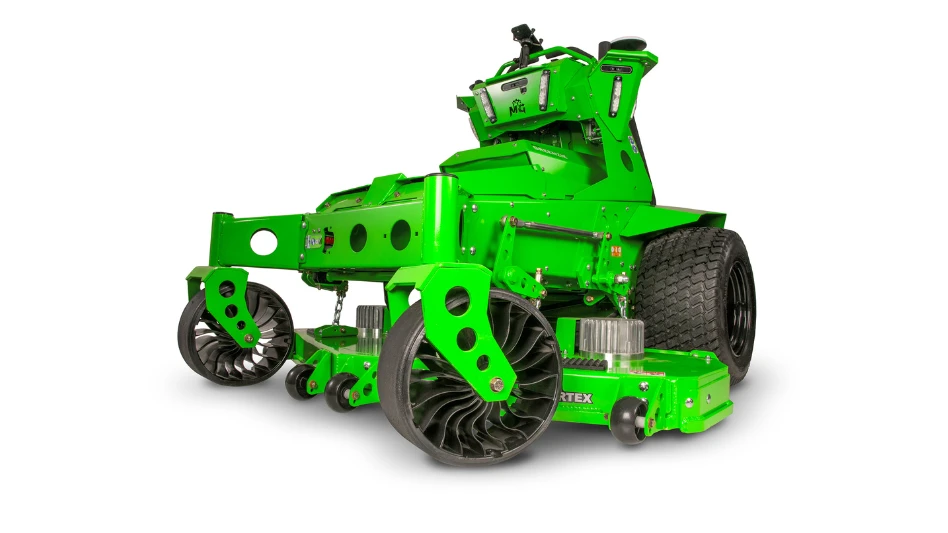When it comes time for leaf removal operations, you need to get as creative as possible to develop an effective system of leaf removal and disposal. Consider directing crews to remove leaves in the grass areas every week and remove leaves in plant beds only every other week. Most clients accept this and it greatly reduces labor hours. Also, remember that at this time of year, your crews will spend more time on each site due to leaves, so schedule accordingly.
Leaf pick-up is another issue to deal with. One option is to have regular mowing crews remove leaves from each site every time they visit. Option No. 2 is to have a separate crew come by later and perform the removal. On larger properties, having a separate crew pick up leaves curbside is generally more productive, as it takes fewer people to eliminate the leaf pile than to actually remove the leaves and pile them at the curb. Further, having a large crew make trips to your dumpsite is not an efficient use of labor.
A large vacuum attached to a covered dump truck is used extensively in our industry for leaf removal. However, before you go out and buy a new vacuum, be sure you have studied how many hours you will actually use the equipment and how many labor hours will you save with such an investment. I strongly suggest renting a vacuum, even on a long-term basis, before you purchase. Remember, you’ll continue to make payments on a piece of equipment like this, even while it sits in your yard without being used.
In lieu of a separate vacuum truck, consider equipping a single crew with the necessary tarps, etc., and schedule them to perform only leaf removal until all necessary sites have been visited. If you have few sites, this means you might not start leaf removal until later in the week and the leaves will sit on clients’ curbs for a day or two. This is generally not a problem. Remember, to become efficient, making every employee more productive is essential. Think in minutes.
Be sure to watch overtime during leaf season. This is not the time of year to incur extensive overtime costs. To address this, look at your crew configurations and see if it’s more efficient to add a person to a crew for a few weeks than to work the overtime. Also, are there functions that can be postponed until the leaves let up? Should you try rerouting crews? Put lower-paid people on the pick-up crew on overtime? Also, think about using four days each week for leaf clean-up and the fifth day for pick-up on every property.
As you prepare for leaf season, gather your key people, including foremen, and have an open discussion as to how best to organize and perform this function. Getting their input will give you some valuable insights and remind your crews that you respect their ideas.
Also, consider having your estimator spend scheduled time in the field this fall actually observing how your crews remove leaves. This will help you make recommendations on how to improve efficiency this fall, and also teach you new techniques and procedures that you can pass onto other crews. In order to really dissect this operation, measure the turf areas and the plant bed areas and determine the total square footage of each. Use these numbers to time the leaf removal operation and come up with the number of labor hours per square foot to provide another way to look at this tricky landscape function.

Explore the October 2005 Issue
Check out more from this issue and find your next story to read.
Latest from Lawn & Landscape
- Connect, Control & Conserve with Horizon Technical Services
- Use Horizon's Parts Hotline
- How I built a Top 100 company
- Horizon’s Exclusive TurfGro Fertilizer
- Grow your business with mosquito control
- LandCare adds 2 branches in SoCal, promotes Aleman to branch manager
- Spray them away
- PERC helps debut propane direct-injection fuel system at ACT Expo 2025





